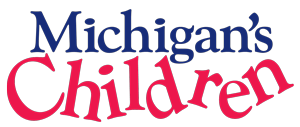A Great Budget for Kids, but Not for Struggling Families
June 30, 2015 – This month, the Legislature and Governor approved the state’s fiscal year 2016 budget, which goes into effect on October 1, 2015. Overall, it was a great budget for kids. But – and here’s a big but – if you take into the very important factor that children and youth are part of a family unit, the budget was only mediocre.
The big winners in the budget was in education. The focus on improving third grade literacy led to a $31 million state investment towards those efforts that included a significant investment towards additional learning time for kindergarten through third graders struggling to read, a variety of teacher supports, and some resource for our youngest learners through parent coaching and support. The focus also included some very important quality improvements to Michigan’s child care subsidy program to make high quality child care more accessible for the state’s lowest-income working families.
On the other end of the education spectrum, in addition to the first significant expansion in many years to support At-Risk learners, Michigan also put significant resource to expand career and technical education as well as an increase for adult education – both important dropout prevention and recovery strategies for young people to re-engage in their educations and obtain a high school credential and a path towards college or a career. And, policymakers acknowledged the need for more time in high school for some young people facing extraordinary challenges by allowing districts to fund their education beyond age 20.
While these investments are significant wins for Michigan children and youth, we’ve continued to provide little support to families who face the most challenges in our state – often the same families whose children will benefit from these education investments. The state budget made no efforts to reverse the recent harmful changes to FIP, FAP, and the EITC – Michigan’s cash assistance and nutrition assistance programs and the Earned Income Tax Credit. Instead, lawmakers are now looking to completely eliminate the state’s EITC to fix our roads. Is this really a wise choice?
Similarly, Michigan’s child abuse and neglect rates continue to rise, but support for important family preservation programs have been flat funded with federal funding alone. If we want to reverse this unacceptable trend of child maltreatment, Michigan must get serious about preventing abuse and neglect and supporting families with the most significant challenges so they can provide safe and stable homes. This starts with putting in some state resource to bolster the federal investment. In addition, educational and other life outcomes for young people involved in the CPS and foster care systems continue to fall short of success. Efforts to better support families of all sorts – biological, kinship, guardians, foster and adoptive families – needs to be prioritized.
If we truly want to see more children reading proficiently by third grade and more young people graduating from high school, college and career ready, then we must not ignore the other systems beyond education that will impact education success. The well-being of families directly impacts the well-being of children in families. As a state, we must do better to support families with the most challenges to ensure that their children have equitable opportunities to succeed in school and in life.
To learn more about the recently approved FY2016 budget, visit Michigan’s Children’s Budget Basics library.
-Mina Hong
